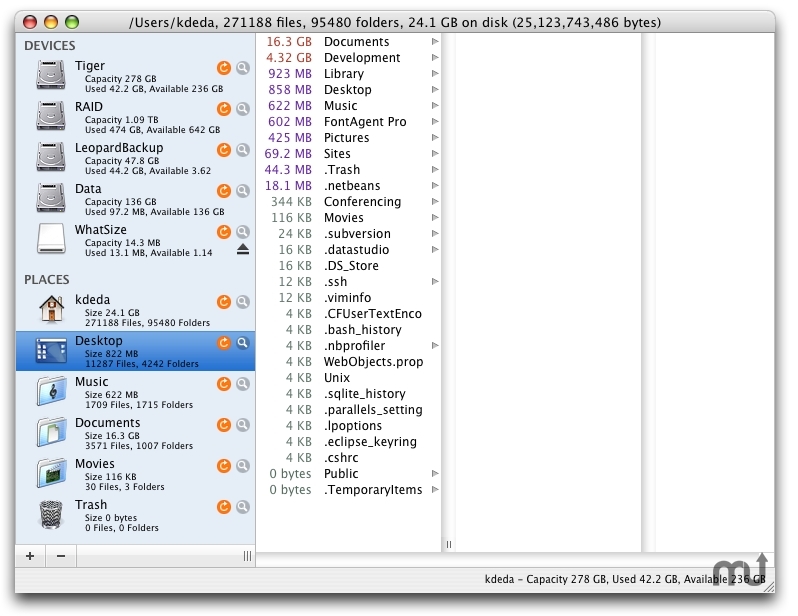

The simplest way to reduce the PDF file size is using the Preview app.
#Whatsize for mac how to
How to make a PDF file smaller on Mac using the Preview application But, if you want to use more advanced options to make it smaller, use a third-party app. You can also compress the size of PDF files by using an online reducer tool. The first method to reduce the size is using the built-in Preview app. There are a few easy methods to make a PDF file smaller on your Mac. In addition, it will also help the users to keep their valuable information without pondering about whether they should delete it.īest 3 ways on how to reduce PDF file size on Mac So, learning how to reduce PDF file size on Mac can help them get around the problem. You can filter the results by media type and date.ĭownload the free version of CleanMyMac X here (this tool is notarized by Apple).A large PDF file can cause headaches to someone who wants to share it via email, save in a cloud service, or simply wants to free up some storage in their MacBook. Anyway, using such a tool will save you lots of time.ĬleanMyMac X has an instrument that identifies large and old files, allowing you to quickly identify the files that will free up most space or cause the least disruption if you remove them. You can use a tool like CleanMyMac X to find your large hidden files and delete them manually. Some Mac cleaning apps, apart from their main purpose, are actually a good way to find unused stuff on your Mac.
#Whatsize for mac upgrade
The only way to create enough space on your Mac to upgrade macOS is to get rid of files on your Mac. They include log files, resources, instructions, and everything else the operating system needs. Simply, they are all the files macOS installs and that are needed to boot and run your Mac. Most of the space, though, is for system files. Perhaps it’s for all the new Memoji headgear, hairstyles, and face coverings. Why is Big Sur so hungry for disk space? Apple doesn’t say. Catalina, for example, only needs 12.5GB if you’re upgrading from Sierra or later, or 18.5GB if you’re upgrading from an earlier version of macOS. If you think that the 35.5GB Big Sur insists on is a huge jump from previous versions of macOS, you’d be right. If you’re trying to upgrade from an earlier version of macOS, you’ll need a whopping 44.5GB of space. Take a look at the system requirements on Apple’s website, and you will see that you need 35.5GB of free space, and that’s if you’re upgrading from macOS Sierra or later. It’s not the same as the macOS size on disk. But know, that disk image is just the start. And you might think that’s all the space you need. If you’ve downloaded Big Sur or looked closely at its page on the App Store, you’ll know that the installer/download size is 12.6GB. If you don't have enough, don't worry: we've included some tips that will help you clear up some space.

The macOS Monterey installer itself takes 12.13GB, just around the same size as the Big Sur installer.Ĭheck how much free space you have before upgrading your Mac: go to the Apple menu > About This Mac > Storage. Still, it contains many exciting new changes and essential improvements, requiring around 26GB of available storage space.
#Whatsize for mac update
MacOS Monterey doesn't look as packed with features as the previous Apple update - Big Sur. But how much space does macOS take? Let’s find out. If you have tried to upgrade to macOS Big Sur, particularly on a Mac with a 128GB SSD, you may have encountered an error message telling you that you don’t have enough free space for the installation. But to help you do it all by yourself, we’ve gathered our best ideas and solutions below. So here's a tip for you: Download CleanMyMac to quickly solve some of the issues mentioned in this article.


 0 kommentar(er)
0 kommentar(er)
